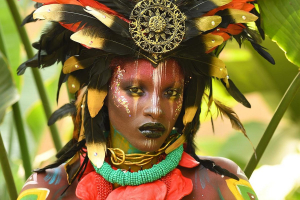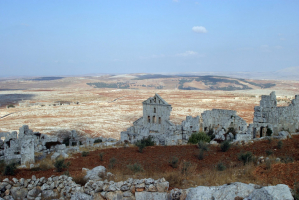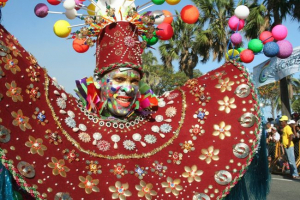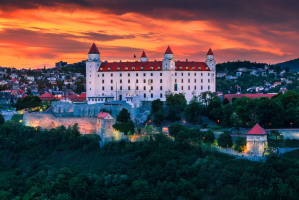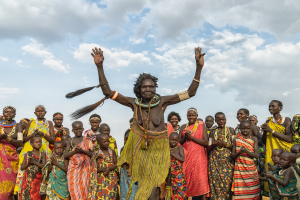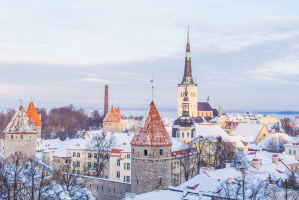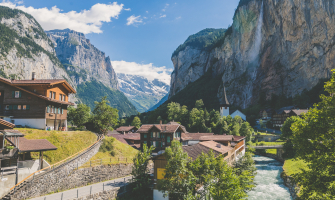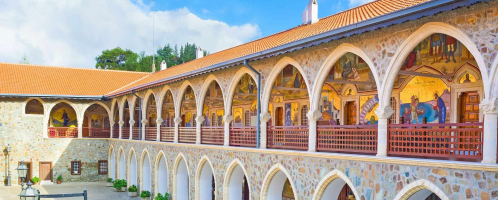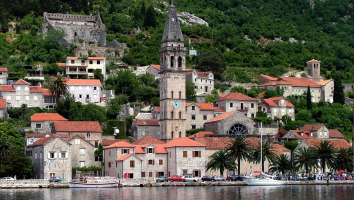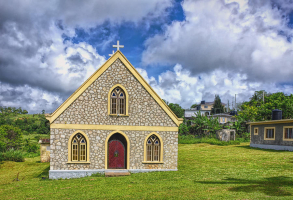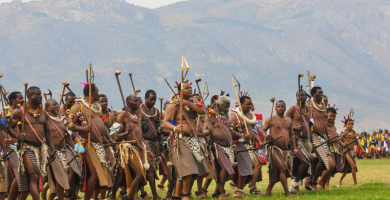Top 10 Costa Rica Culture, Customs, and Etiquette
Costa Ricans are renowned as some of the friendliest people in the world. If you're planning to visit Costa Rica, it helps to know a little about how Ticos ... read more...behave and interact with one another and what you can expect from the people you meet during your travels. Here is a list of Costa Rica culture, customs, and etiquette that Toplist provides you.
-
Back in the 16th century, when the Spanish explorers arrived in what today is called Costa Rica, all they found was a region scarcely populated by several poorly organized tribes. When Columbus arrived, he named the area Costa Rica ("Rich Coast"). The natives he encountered were friendly and wore lots of gold. The first colonial settlement in Costa Rica was Cartago, established in the late 16th century. It was situated in the central highlands because of its rich and fertile soil, and not along the coast as with many other colonial settlements.
In 1723, the Irazu Volcano erupted and destroyed much of the original Cartag.o settlement, but fortunately, the survivors were able to rebuild the town from what was left by that natural disaster. In 1808, Costa Rica became wealthy with coffee production. This new industry allowed for massive economic, cultural, and geographic expansion, leading to greater national pride and ultimately a successful bid for independence from Spain in 1821.
In an interesting turn of events in 1856, American William Walker threatened the country's newfound independence and tried to form a confederacy of South American states, hoping to unite the five Central American countries as one federated state with himself as leader. He arrived in Costa Rica with an army of Nicaraguan slaves, but Costa Rica's president, Juan Rafael Mora, was able to quickly organize an army of less than 10,000 to fight off the pretentious US military officer. Even today, this victory of a peasant army is still celebrated, and the battlefield - La Casona, in Santa Rosa National Park - is now a museum.
Today Costa Rica takes great pride in the fact that it is one of the richest Latin American countries and it displays this by establishing great protection for their natural environment and welcoming people from all over the world to take part in its pride.
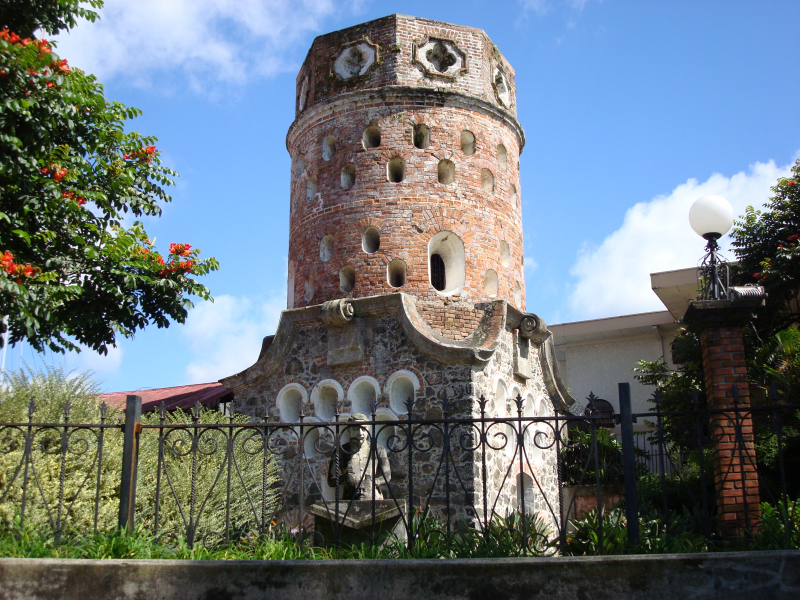
wikimedia.org 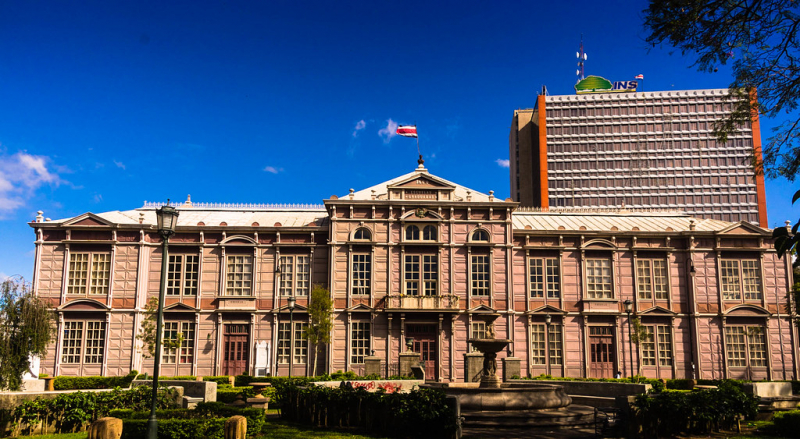
skyscrapercity.com -
If you ever exchanged emails with Costa Rican people, you will become aware that it’s a simple courtesy to start each email by greeting the person and saying you hope they’re doing well. In the United States, you might typically start an email by cutting straight to the message you want to deliver, but in Costa Rica, this comes off looking brusque and confrontational.
The same is true on the phone — if you call someone, even if it’s a friend or a business associate you commonly speak with, you would generally open the conversation with a friendly greeting and a little chitchat before you get around to the point of your call. In some cultures, these little niceties might seem like a waste of time, but in the culture of Costa Rica, they’re practically a requirement.
The same rule applies to almost all face-to-face interactions with Costa Ricans. Even if you’re meeting with a lawyer to discuss an important legal issue, it would be customary to exchange a few pleasantries first before you get down to the important business at hand. Your lawyer might charge by the hour, but he’ll have a few minutes just to shoot the breeze!

practiceportuguese.com 
verywellfamily.com -
When you visit Costa Rica, you might come across a term known as “tico time.” It is related to the “pura vida” way of life that dominates Costa Rican culture. It often means that Ticos are not always the most punctual in their personal lives. For example, if you are meeting a friend for lunch, you may agree to meet at 12:00pm, but you might not actually meet until 12:30 or later. If you are throwing a party that starts at 8:00pm, expect people to show up between 8:00pm and 12:00am. It also refers to the pace at which Ticos tend to work. When you need to do errands, like go to the bank or get a haircut, you can often expect to wait in line for quite a while.
On the one hand, Tico Time reflects a wonderful aspect of Costa Rican culture and way of life. People are generally very respectful of each other and do not stress or sweat over a bad situation. This contributes to the happiness of the country and the Pura Vida spirit that many people come to love.
On the other hand, it can be a bit frustrating for foreigners, and even Ticos themselves. If you are accustomed to everything running on time and/or on a strict schedule, Tico time may be very frustrating. Tico Time is less prevalent in the capital city of San Jose in the Central Valley due to business culture and US influences, but it is a different story on the coast. People who live near the beach tend to be very laid-back, "pura vida," and very happy to run on Tico time.
If you are a foreigner visiting or living in Costa Rica, it’s best to embrace Tico time as a way of life. Otherwise you might find yourself unnecessarily stressed out or frustrated.

corporateclassinc.com 
susancyoung.com -
To the casual observer, Costa Rican family life appears similar to that of North America: couples share in household duties; parents raise their children with love; and, while marriage is the most traditional union, more and more couples are choosing to live together before marriage. However, a closer look reveals that family life in Costa Rica is unique in many aspects.
In general, Costa Rican families are very tightly knit. Many households are multigenerational – grandparents, parents and grandchildren comprise a common family unit, but great-grandchildren, cousins, and other close family members may live together, as well. Children often live at home until they get married. It is important to note that there is little to no social stigma associated with living at home, even for adults in their 20's, 30's or 40's who have steady jobs.
While living in close quarters may be challenging at times, this practice promotes family unity, and Costa Rican family members enjoy each other's company. Weekends are often spent with relatives, and young children count their siblings and cousins as their best friends and favorite playmates. Adults are close with their parents, and grandparents are involved in their children and grandchildren's lives.
With so much time spent among family members of all ages, it is not surprising that children can be very compassionate with older and younger family members. It is common to witness a 14-year-old boy rocking his baby sister to sleep or a young girl carrying her younger brother around on her hip. Likewise, children often help their grandparents with household chores, or lend them a supportive arm to cross the street or board the bus. Even the embarrassment factor seems lesser in Costa Rica: school-age and even teenage youth, both boys and girls, often hold hands with their parents, and kiss them goodbye before heading off to school.
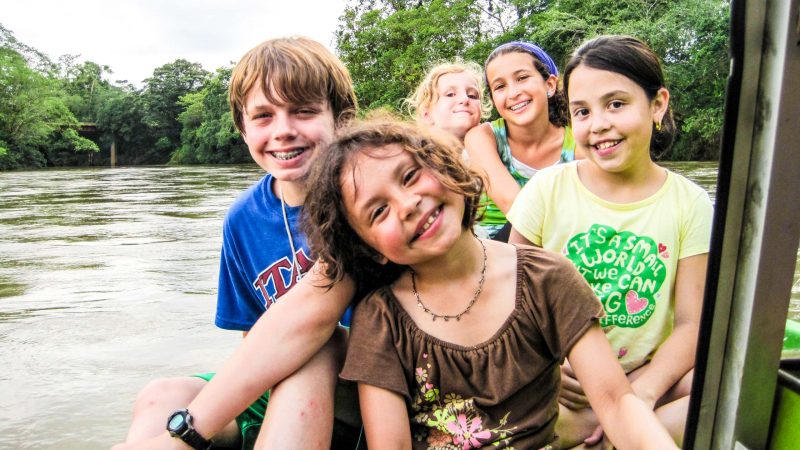
journeysinternational.com 
institutoasis.com -
The Central American nation of Costa Rica covers an area of 51,060 square km and hosts a population of 4.9 million people. Christianity is the religion of the majority in Costa Rica. Roman Catholicism is the main denomination. Catholics account for 57% of the total population of the country. 25% of the country is made up of Protestants.
Christianity was introduced to the country by Europeans. Christian missionaries spread the teachings of Christianity and forcibly converted the local population. While the Catholic church dominates in Costa Rica, several of the Protestant denominations, especially the Evangelicals, are growing in popularity. Irreligion is the second most cited religious belief system in Costa Rica. Irreligion refers either to Agnosticism (the belief that people do not know whether there is a higher being) and Atheism (the belief that there isn't a higher being).
The country has more Buddhists than any other Central American nation. Chinese immigrants who arrived in Costa Rica in the 19th and 20th centuries introduced religion to the country. Although many of them converted to Christianity due to the influence of the conservative society in the country, others managed to hold on to Buddhism. The Casa Zen was one of the first Buddhist temples to be established in the country. Today, the religion has around 100,000 followers in the country.
About 500 families are practicing Islam in Costa Rica. About 2,500 members of the Jewish faith also live in the country. The Jehovah's Witnesses who represent less than 1% of Costa Rica’s population are mainly found on the Caribbean coast of the country. Followers of Taoism, the Bahá'í Faith, Wicca, Hinduism, Hare Krishna, Scientology, etc., also inhabit the country but in very small numbers. Animism is also practiced by a section of the country's indigenous people.
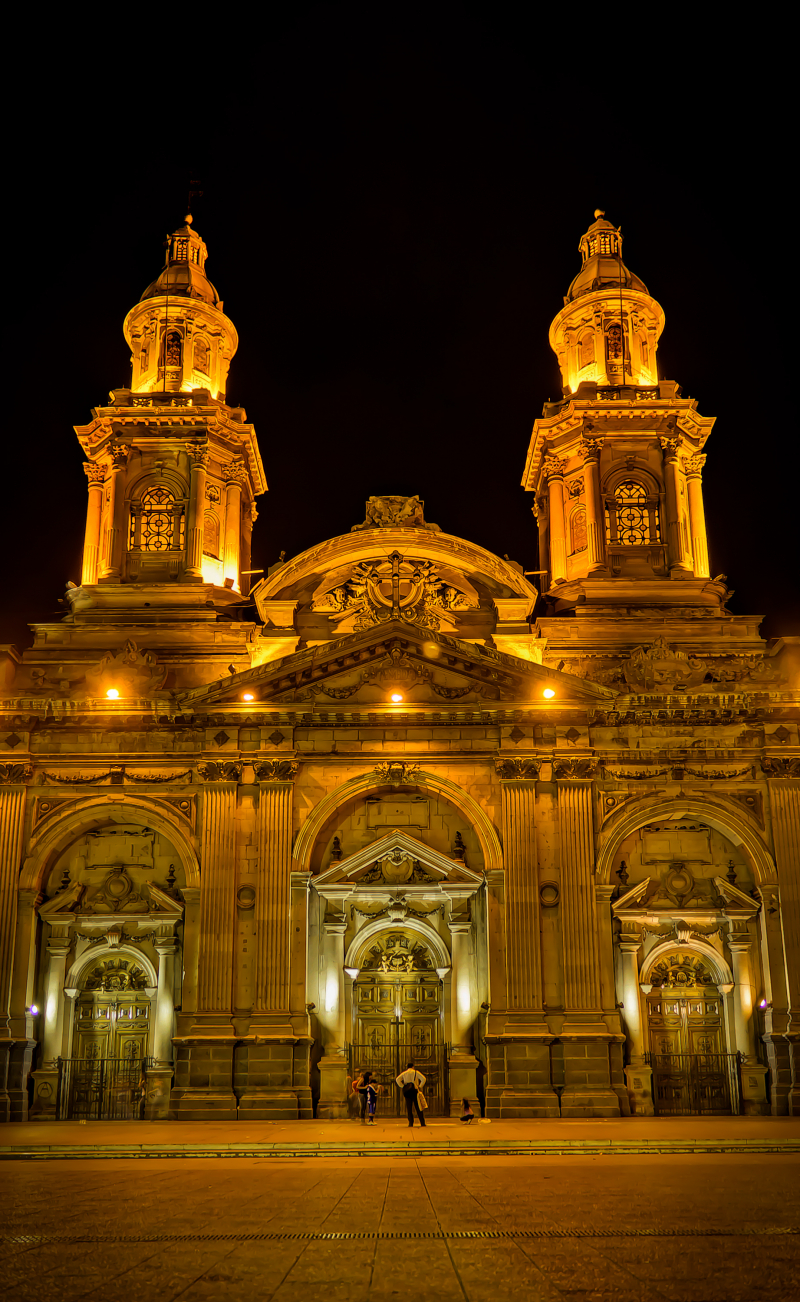
studycountry.com 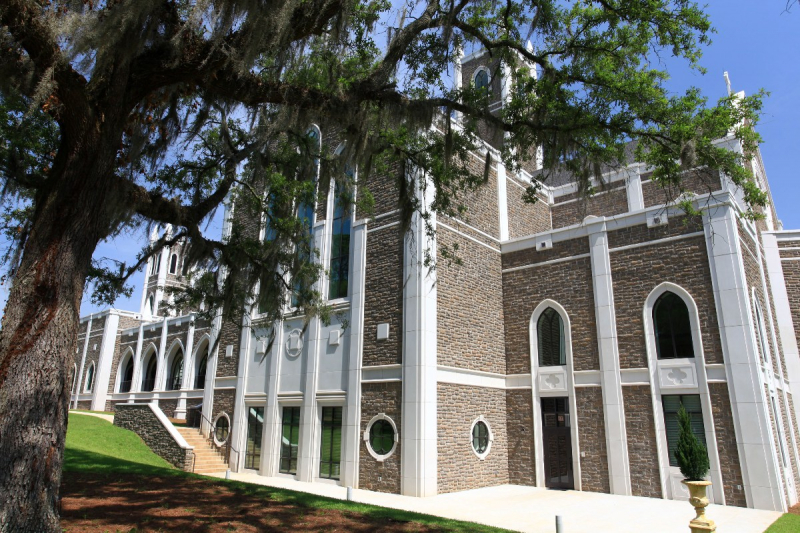
advancedarchitecturalstone.com -
Mealtimes are occasions for lengthy and lively conversations in Costa Rica. Table manners vary from family to family, but in general, both hands should be kept above the table, not in the lap. Most people eat three meals a day, and many have midmorning and afternoon coffee breaks or snacks. The evening meal is generally the main one.
There are several staples that are a part of most meals in Costa Rica, but the two that most often appear on every plate of the day are rice and beans. Corn tortillas and salsa Lizano also make an appearance at most meals. The three main meals of the day are well-balanced and often made from scratch with great care and love. It’s not uncommon for everyone to come home for lunch, including schoolchildren – family is very important in Costa Rican culture. A typical Costa Rican breakfast is a plate of gallo pinto, eggs, homemade corn tortillas or fresh bread from the bakery, sweet plantains and natilla or local cheese, such as queso turrialba.
A typical Costa Rican lunch is a casado – a plate of rice, beans, protein, salad (usually something with cabbage) and sweet plantains. It can also include tortillas, yucca, avocado, pico de gallo and fresh or fried cheese. Other typical lunch options are arroz con pollo (rice with chicken, or shrimp, mixed seafood, pork or mixed vegetables), ceviche, sopa negra (black bean soup), sopa de mariscos (seafood soup) or olla de carne (beef stew), just to name a few.
At dinner in Costa Rica, you’ll find the same dishes served at lunch. However, during special occasions, celebrations or family gatherings, a big barbecue or pig roast might take the place of the typical dinner spread. An invitation to one of these social gatherings is a real treat.
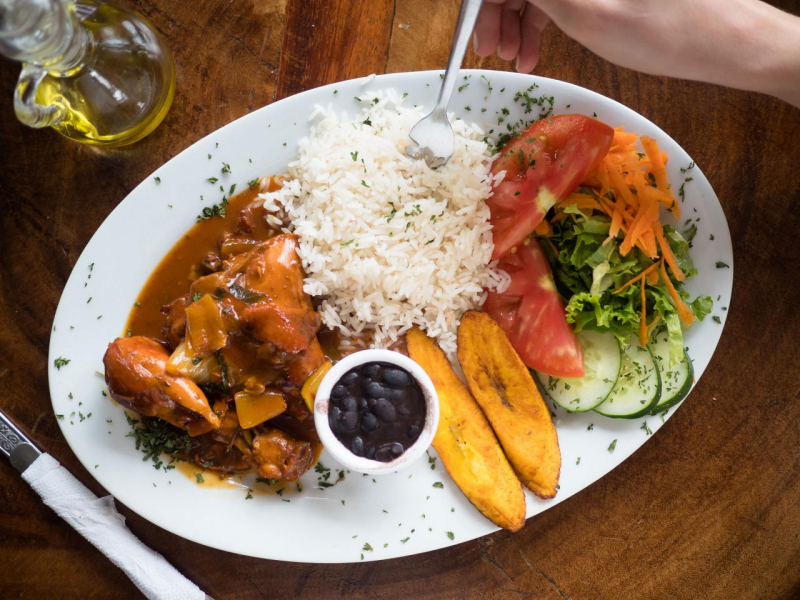
travelchannel.com 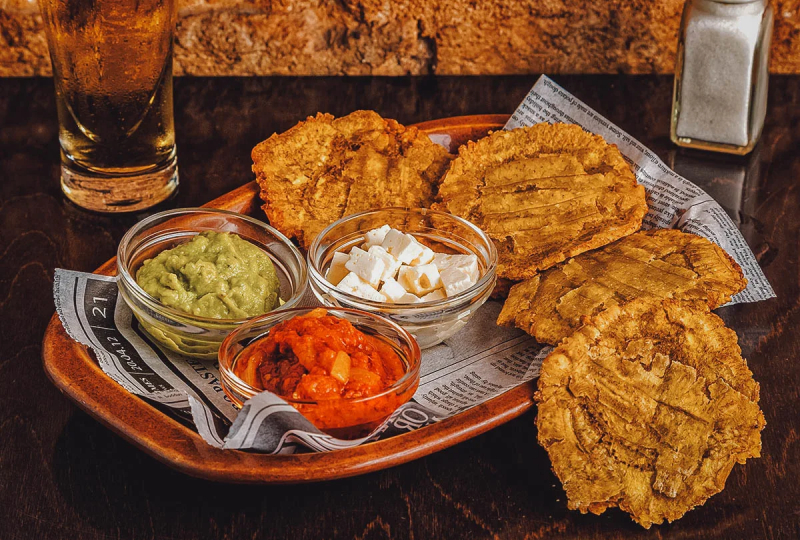
willflyforfood.com -
Costa Rican culture has traditionally been machismo, or male-dominated, similar to 1950s America. Women, for example, traditionally handle household chores, whereas men strive to be breadwinners. Women are expected to dress nicely and wear makeup, and men are quick to express their gratitude with whistles and verbal compliments. Machismo has also fueled infidelity in relationships; taking (and flaunting) a mistress was once regarded as a source of pride.
Costa Rica, on the other hand, has evolved over the last several decades. While machismo and gender differences still exist, sexism and gender inequality are no longer as acceptable as they once were. Infidelity is mostly kept behind closed doors. Women frequently work outside the home and earn salaries comparable to their male counterparts. Costa Rican men, on the other hand, still value female beauty and are not afraid to show it. Women, try not to be offended if a man stares at them, whistles, or tries a pickup line; in most cases, these actions are harmless and intended as a compliment.

followmeaway.com 
thebestmailorderbrides.com -
Tipping in Costa Rica is not obligatory as restaurants usually add a service charge on the bill of approximately 10%. This is considered an appropriate amount for a tip when dining out, but you can always leave a few extra colones if you think the service deserves it. If you’re going to tip in dollars, check that day’s currency exchange rates when considering how much to tip.
- Ubers/taxis: Unless you’re paying cash, an Uber fare is usually considered to include the tip. With the red taxis, the journey is less certain. The meter is still running even when you’re sitting in a traffic jam that is going nowhere and, often, the drivers of the red taxis won’t know exactly where you want to be as there are no street names or numbers in Costa Rica. If you’ve had a good journey in a red taxi, you can always tip a bit, but it’s not expected.
- Tour Guides: This will depend upon how long you spend with a tour guide and where. However, if you spend a day with a guide, it is customary to tip them approximately $6-$7 though higher end tours may warrant a larger tip. If you’re taking a tour bus, the tip for the bus driver is approximately $3.
- Cafes and bars: Often these places are too informal for a customary tip system, but as you might see in the U.S., there will often be a tip jar next to the cash register. They will be grateful if you throw in some coins or even a small denomination bill or two.
- Hotel bars: If you’re staying at the hotel, you aren’t obliged to pay for your drinks on the spot. They can be added to the tab, but if you’re paying by the drink, or are a day guest to the hotel bar, it’s customary to leave approximately $1 per drink.

mashed.com 
today.com -
Costa Ricans take pride in their appearance and dress well. In business situations, both men and women dress formally but not as conservatively as in North America. Outside the office, men and women dress informally, although casual dress in Costa Rica is fancier than you might expect.
Tico men typically wear conservative clothing. Costa Rican men rarely wear shorts in San José or other cities in the Central Valley. Tourists wearing shorts, sandals, and other typical beaches, golf, or vacation wear will stand out in many towns and cities, even if they are accepted. Costa Rican women, on the other hand, especially young women, are more likely to show some skin in casual and even business settings.
Women of all sizes wear very tight and revealing clothes – bras are often color-coordinated to match an outfit's accessories. However, be respectful in your dress, especially if you plan on visiting churches, small towns, or local families. Women, no matter how they dress, may find themselves on the receiving end of whistles, honks, hoots, hisses, and catcalls

thetravelpockets.com 
globalbrandsmagazine.com -
Giving gifts is common practice in Costa Rica. Presents are exchanged on Christmas, Father's Day, birthdays, and Mother's Day are one of the most important gift-giving holidays of the year. It is also appropriate to take a bottle of wine to a dinner party or give flowers to celebrate any occasion.
Gift giving in Costa Rica is customary and is considered standard for business negotiations. The price range for your gift should fall somewhere between $10 and $50, and it's very important to always have the gift wrapped in nice paper. Keep in mind that the thank-you note holds high importance here, and should never be overlooked.
There are few gifts that would be inappropriate in Costa Rica. A country renowned for its fruit and coffee, giving gifts in Costa Rica such as this would not be wise, and may even be offensive. Gifts should never be wrapped in black or purple wrapping paper due to the two colors' significance during Holy Week. And, in business, it may be best to use caution as a man giving gifts in Costa Rica to a female colleague. In order to avoid any misunderstanding about the nature of the gift, you may want to consider presenting the gift on behalf of your wife or secretary. Avoid lilies, as they are usually reserved for funerals. Giving gifts is unquestionably one of the most unique Costa Rica culture, customs, and etiquette.

adhnk.com 
inverse.com












